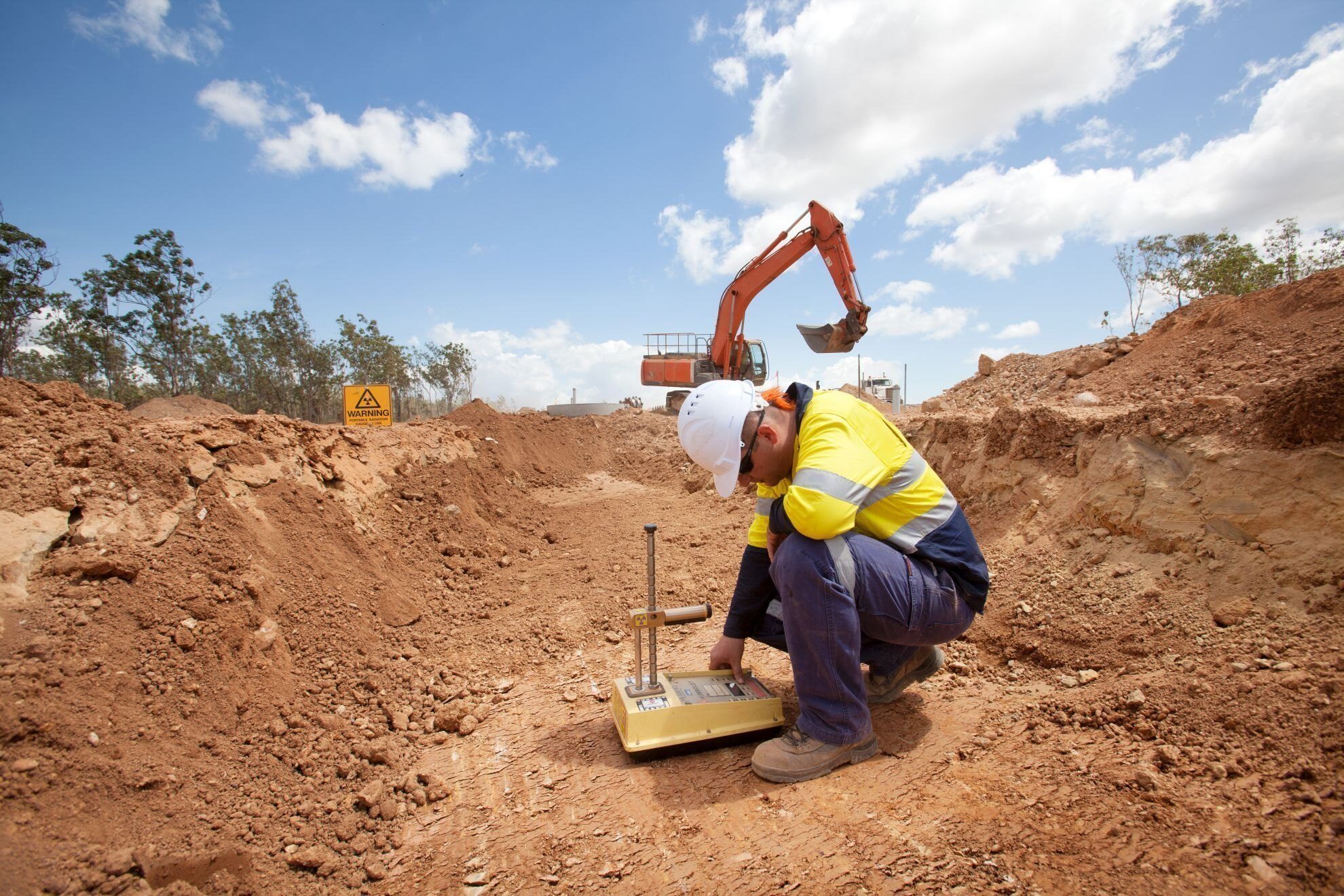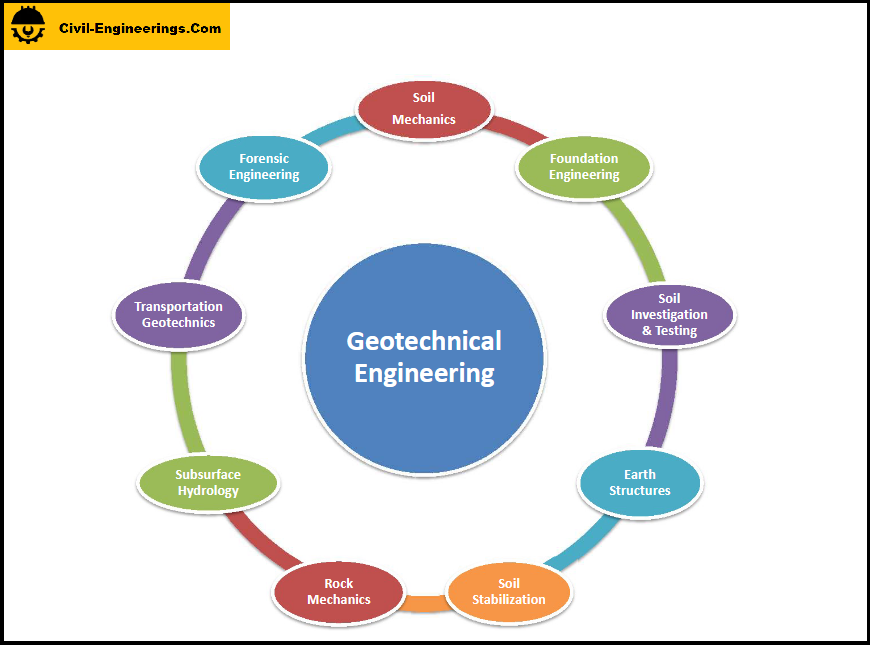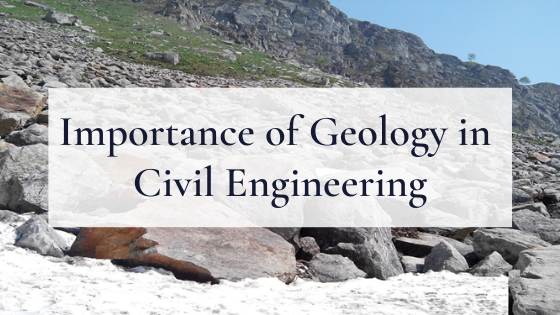The Single Strategy To Use For Geotechnical Engineering For Construction Projects
Our Geotechnical Engineering For Construction Projects Ideas
Table of ContentsThe Buzz on Geotechnical Engineering For Construction Projects3 Simple Techniques For Geotechnical Engineering For Construction ProjectsFascination About Geotechnical Engineering For Construction ProjectsGeotechnical Engineering For Construction Projects - QuestionsThe Facts About Geotechnical Engineering For Construction Projects UncoveredGetting The Geotechnical Engineering For Construction Projects To WorkFascination About Geotechnical Engineering For Construction Projects
and Kovacs, W. (1981 ), An Intro to Geotechnical Design, Prentice-Hall, Inc. Deep Scan Technology (2023 ): Deep Scan Technology uncovers surprise structures at the site of Denmark's tallest structure. "Geofrost Coring". GEOFROST. Fetched 20 November 2020. Han, Jie (2015 ). Principles and Technique of Ground Enhancement. Wiley. ISBN 9781118421307. RAJU, V. R.Ground Improvement Technologies and Situation Histories. Singapore: Study Publishing Solutions. p. 809. ISBN978-981-08-3124-0. Ground Improvement Principles And Applications In Asia. Pariseau, William G. (2011 ). Layout analysis in rock auto mechanics. CRC Press. Hegde, A.M. and Palsule P (Geotechnical Engineering for Construction Projects).S. (2020 ), Efficiency of Geosynthetics Reinforced Subgrade Subjected to Repeated Automobile Plenties: Experimental and Numerical Researches.
Cengage Discovering, Stamford, 666 p. Atkinson, J., 2007. The technicians of soils and foundations. The Observational Technique in ground engineering principles and applications.
The 7-Minute Rule for Geotechnical Engineering For Construction Projects
Lab and field testing plays a vital role in this procedure. By drawing out samples from the planet's subsurface and using a suite of tests, geotechnical designers can predict the behavior of dirt layers and evaluate their suitability for various construction efforts. The significance of geotechnical design in civil engineering can not be overemphasized, attributable to several variables: The first action in any type of geotechnical research includes determining the dirt type at the building website.
The foundation acts as the bedrock of any type of building and construction project. Choosing the ideal structure type is a decision that pivots on the comprehensive evaluation given by geotechnical engineering.

Geotechnical website investigation is a crucial step in the planning and implementation of any kind of building and construction project. It includes the collection and evaluation of data related to the physical properties of soil and rock below a recommended building and construction website. This information is vital for the layout and construction of safe, stable, and sustainable frameworks.
An Unbiased View of Geotechnical Engineering For Construction Projects
, additionally known as subsurface expedition, involves a series of activities intended at figuring out the dirt, rock, and groundwater conditions at a building and construction site. The main purposes are to determine possible geotechnical hazards, analyze the engineering residential or commercial properties of subsurface products, and give suggestions for the layout and building of structures, retaining walls, and various other frameworks.
This may include geological maps, aerial photographs, previous investigation reports, and historical information. The workdesk study aids in determining possible geotechnical issues and preparing the succeeding fieldwork. Complying with the desk research, a website reconnaissance is conducted to visually examine the website and its surroundings. This includes observing the topography, water drainage patterns, existing structures, greenery, and any type of indicators of instability or disintegration.
The Single Strategy To Use For Geotechnical Engineering For Construction Projects
Shallow test pits are excavated to directly observe and example the soil and rock. This approach works for researching the upper layers of the subsurface and recognizing near-surface threats. Non-invasive geophysical techniques, such as seismic refraction, ground-penetrating radar (GPR), and electrical resistivity tomography (ERT), are utilized to map subsurface conditions and detect abnormalities.
Soil and rock examples accumulated during the field examination go through lab testing to establish their physical and mechanical residential or commercial properties. Usual lab tests consist of grain size evaluation, Atterberg limitations, compaction tests, triaxial shear examinations, and loan consolidation tests. These examinations offer essential information for geotechnical evaluation and design. The information collected from the desk study, website reconnaissance, field investigation, and laboratory testing are evaluated and analyzed to establish a comprehensive understanding of the subsurface problems.
The key benefit of geotechnical site examination is making sure the safety and stability of structures. By understanding the subsurface conditions, designers can design foundations and various other architectural aspects that can endure the tons and ecological see this pressures they will undergo. This decreases the danger of negotiation, decrease, and architectural failing.
An Unbiased View of Geotechnical Engineering For Construction Projects
For instance, understanding soil characteristics can direct the option of excavation strategies, dewatering approaches, and ground renovation measures. This ensures reliable and risk-free construction methods. Geotechnical site examinations are typically needed by constructing codes and guidelines. Abiding by these requirements guarantees conformity with lawful and safety standards, staying clear Look At This of prospective legal responsibilities and job hold-ups.
This info is very useful for job supervisors, designers, and professionals in establishing realistic routines, budgets, and backup plans. Geotechnical Engineering for Construction Projects. Skyscraper Structure in a Coastal AreaIn a seaside city, a high-rise household building was intended on a site with presumed loose sand deposits and a high water table. A detailed geotechnical investigation, consisting of borehole exploration, CPT, and geophysical studies, was conducted
Some Ideas on Geotechnical Engineering For Construction Projects You Should Know
Based on these findings, the foundation style was changed to consist of deep heap structures extending into stable strata, and ground improvement methods, such as vibro-compaction, were implemented to minimize liquefaction dangers. This proactive technique ensured the security and stability of the building while avoiding costly post-construction remediation. Infrastructure Development on a Sloping TerrainA major framework task, entailing the building of a highway and bridges, was intended on a hilly terrain with high slopes.

The Leaning Tower of Pisa (Italy), a renowned architectural wonder, is infamous for its unintended tilt from substantial geotechnical problems. The tower's foundation was improperly created to take care of the soft, unsteady dirt beneath it, resulting in unequal settlement and its distinct lean. Our world is dotted with remarkable infrastructure projectsfrom towering high-rises to stretching bridgesall standing testimony to the development of the various construction tools and techniques offered.
Geotechnical engineering is a customized field within civil engineering that concentrates on studying the behavior of planet products. This branch delves deep into the groundinvestigating how the dirt, rock, and groundwater at a building and construction site can influenceand be affected bythe facilities that we erect on and right into them. Before a solitary brick is laid or a concrete structure poured, geotechnical designers probe into the earthgathering crucial information regarding the site's dirt structure, rock framework, and groundwater levels.
How Geotechnical Engineering For Construction Projects can Save You Time, Stress, and Money.

is a tool utilized to assess the stability and load-bearing ability of stacks during installment, leveraging the principle of wave breeding. It maximizes building and construction effectiveness by giving real-time assessments, therefore making certain safe and reliable heap foundations. One of the functional applications of geotechnical design includes deciding and performing the ideal approaches for structure construction.
Stack driving stands for greater than the mere act of placing architectural aspects right into the ground. As a matter of fact, it is a meticulously managed process of transferring a structure's lots past the much less steady soil layers better to the surfacedown to the a lot more considerable strata that exist beneath. When it comes to pile driving, think about exactly how geotechnical designers expertly use this method to uniformly distribute the structure's weight.